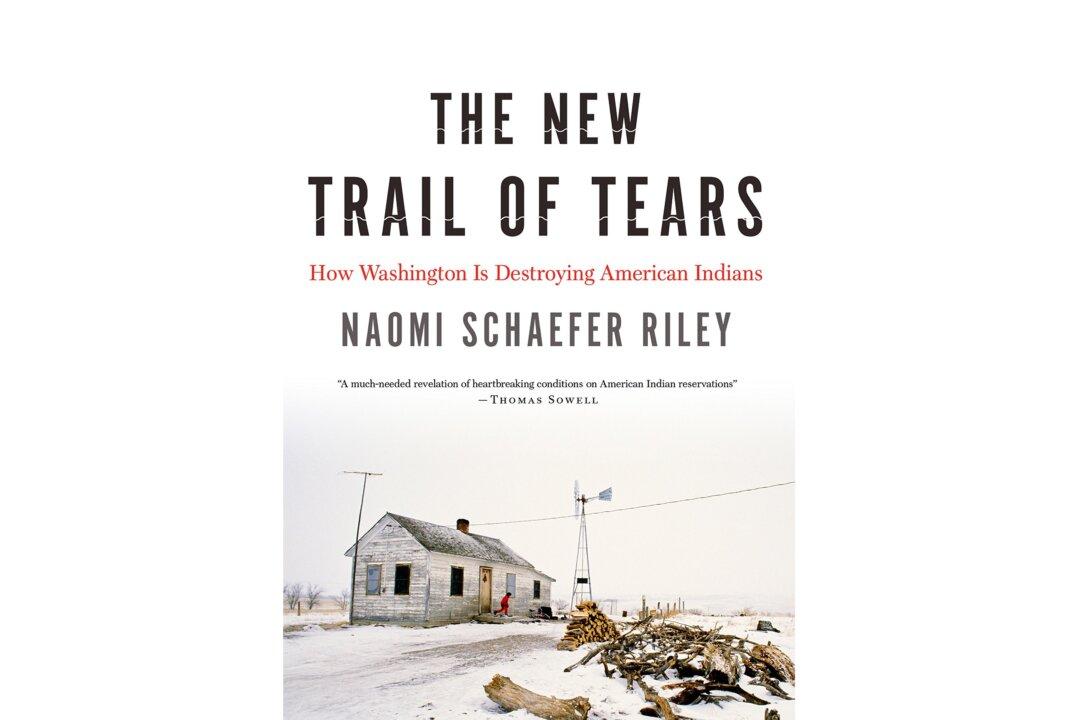The Trail of Tears began and ended nearly 200 years ago. History looks at it as the exemplification of a people felled by war, disease, ignored treaties, and the destruction of its culture by internal and external forces. The Indian Nations and the American Republic (as well as Canada) proved incapable of coexistence, and as a result, the Indian removal effort began in the 1830s. There are more than 550 federally recognized Indian nations and more than 300 reservations left to them. You would be hard-pressed to articulate that as consolation.
But that is a time gone by. The Trail of Tears has been over for a long time. The Indian Tribes now coexist as sovereign nations within the republic. If popular culture, social activists, and the media are to be our guides, the only troubles currently facing the Native American population involve retelling the Native American story, changing the names of certain professional sports teams, and the advancement of sensitivity training. Naomi Schaefer Riley makes it clear that those issues pale in comparison to the real problems facing these nations, and unfortunately the federal government again plays a large role in sustaining those problems.
In her book “The New Trail of Tears: How Washington Is Destroying American Indians,” she details the countless issues that have turned these sovereign nations into “what amounts to a third world country within our borders,” despite them residing in the most prosperous country on earth. Riley wrote her book in investigative journalistic form by conducting countless interviews, breaking down the numbers, and presenting the problems—along with potential solutions—to the public in an easily digestible way.
Some of the Problems
The federal government with its land agreements, creation of the Bureau of Indian Affairs (BIA), and the institution of a demoralizing welfare system, have created what Riley rightly calls “The New Trail of Tears.” Ironically enough, one of the major issues involves land. The author points out that Native Americans suffer from what is called “dead capital.” She writes that Indians “may possess a certain amount of land on paper, but they can’t put it to use by selling it, buying more to take advantage of economies of scale, or borrowing against it.” The issue comes down to what American citizens plainly see as property rights.
But the federal government, though a major player, is only part of the problem. Many of the troubles facing these tribes are from internal causes.
Riley takes the reader on a grim journey through many of these nations currently being ravaged by violence, drug abuse, and suicide. The statistics aren’t merely staggering—they’re heartbreaking. And they’re due, among other reasons, to ineffective justice systems, abysmal education, high unemployment, and extensive poverty. Without making the proper and very necessary changes, these nations are destined to remain in such abject conditions.






